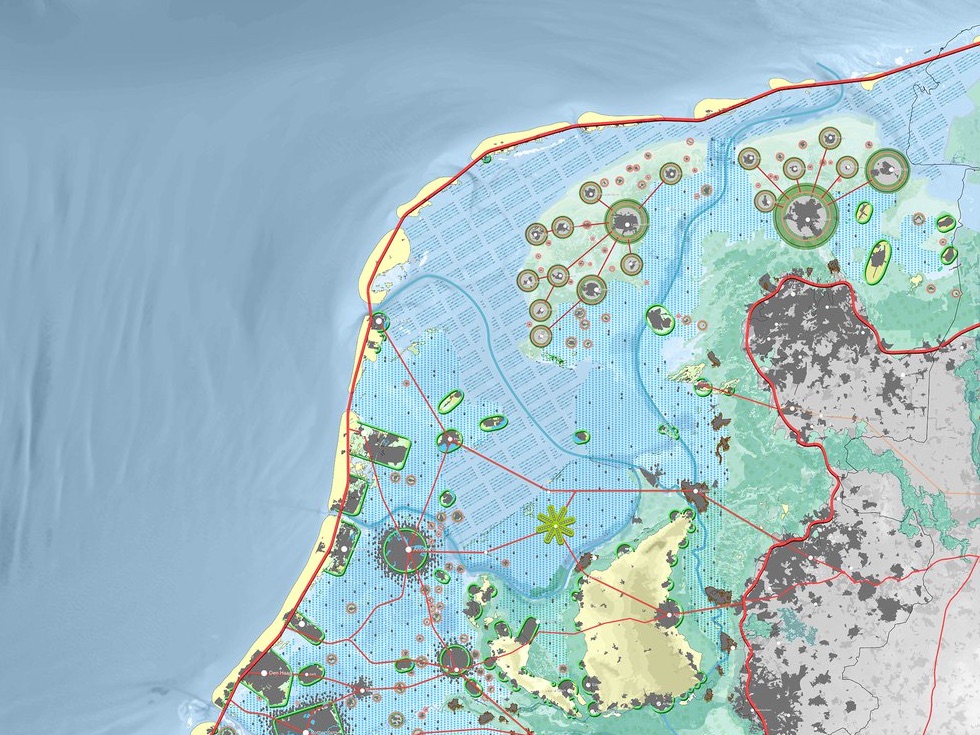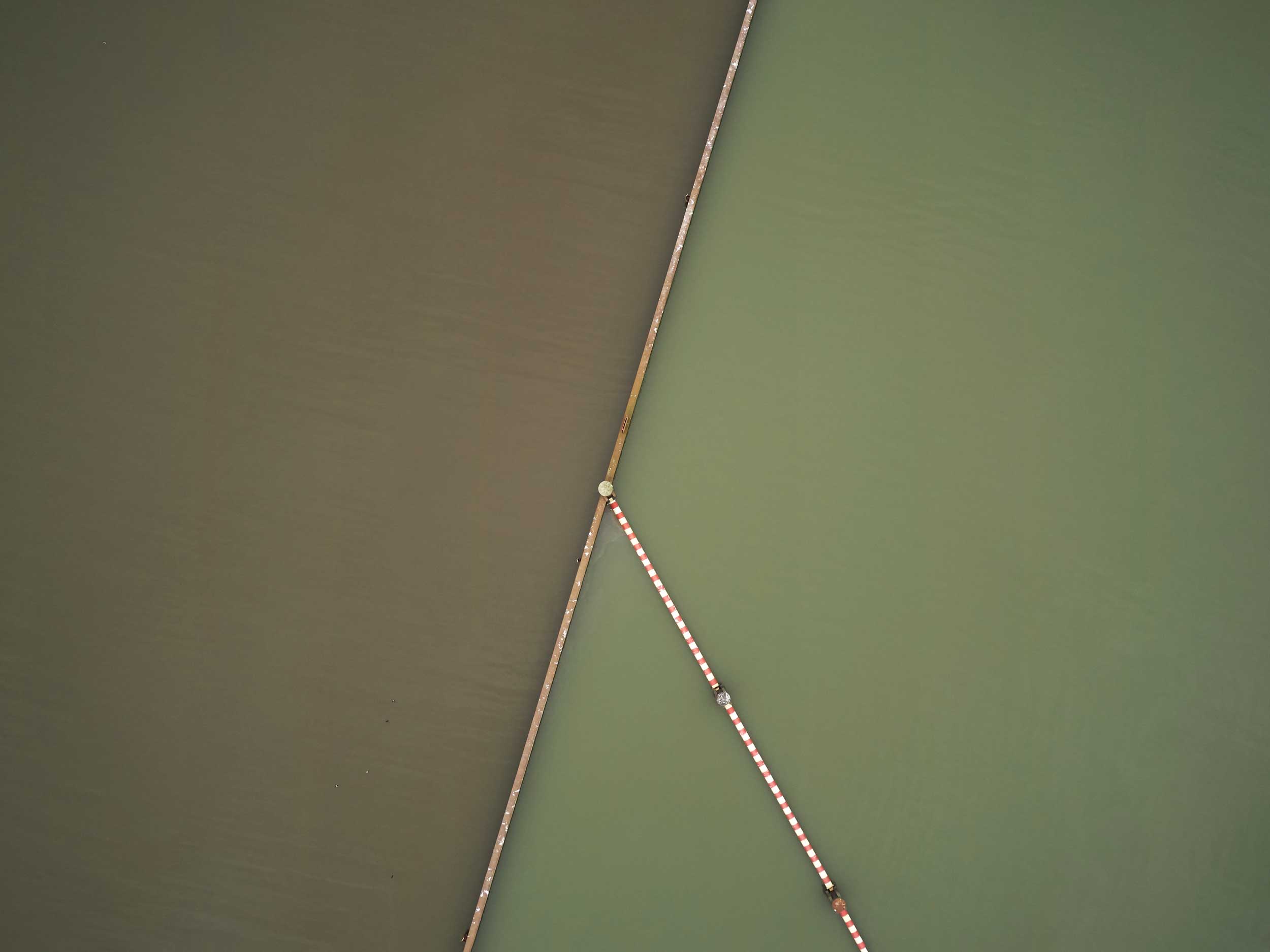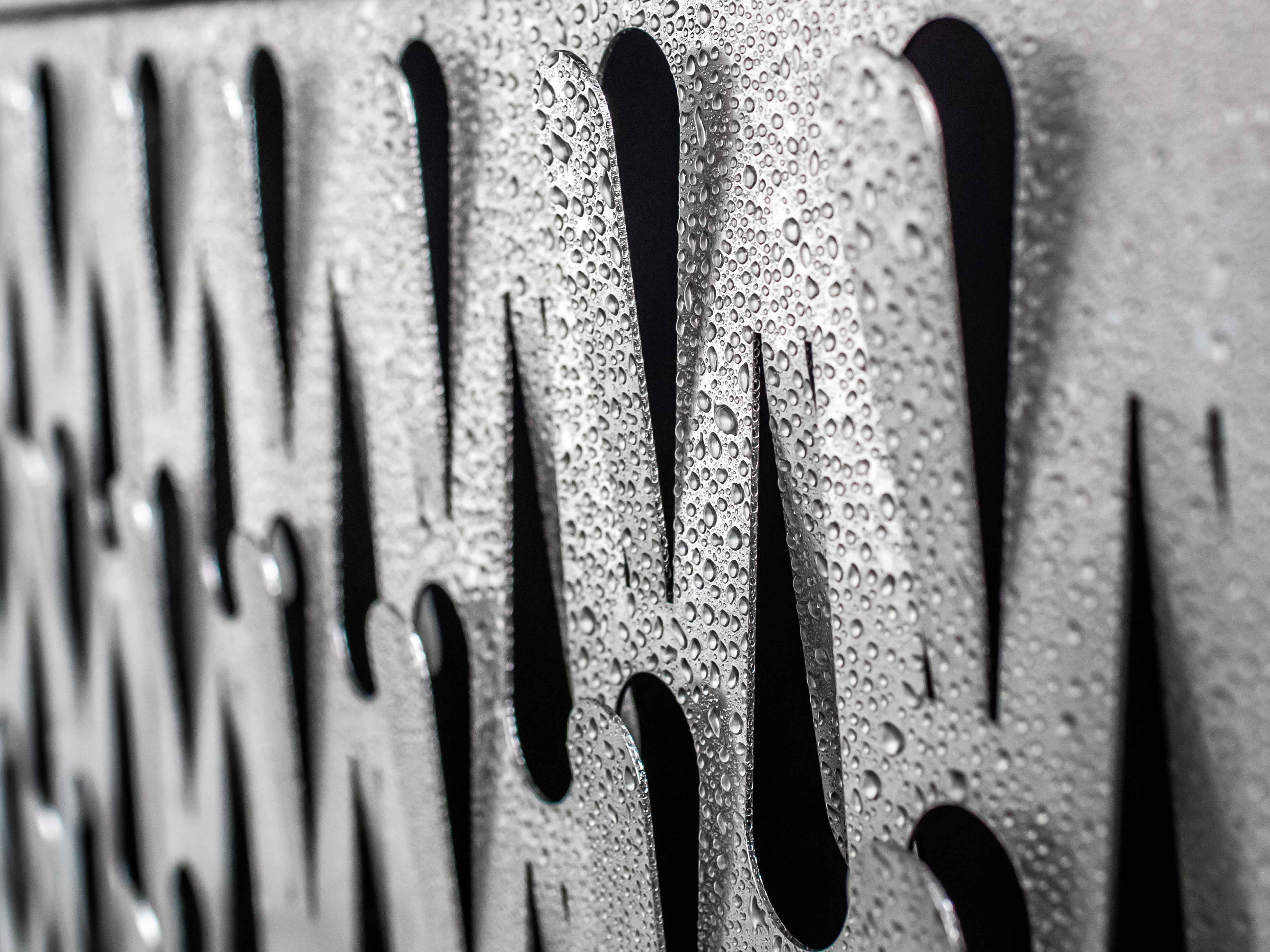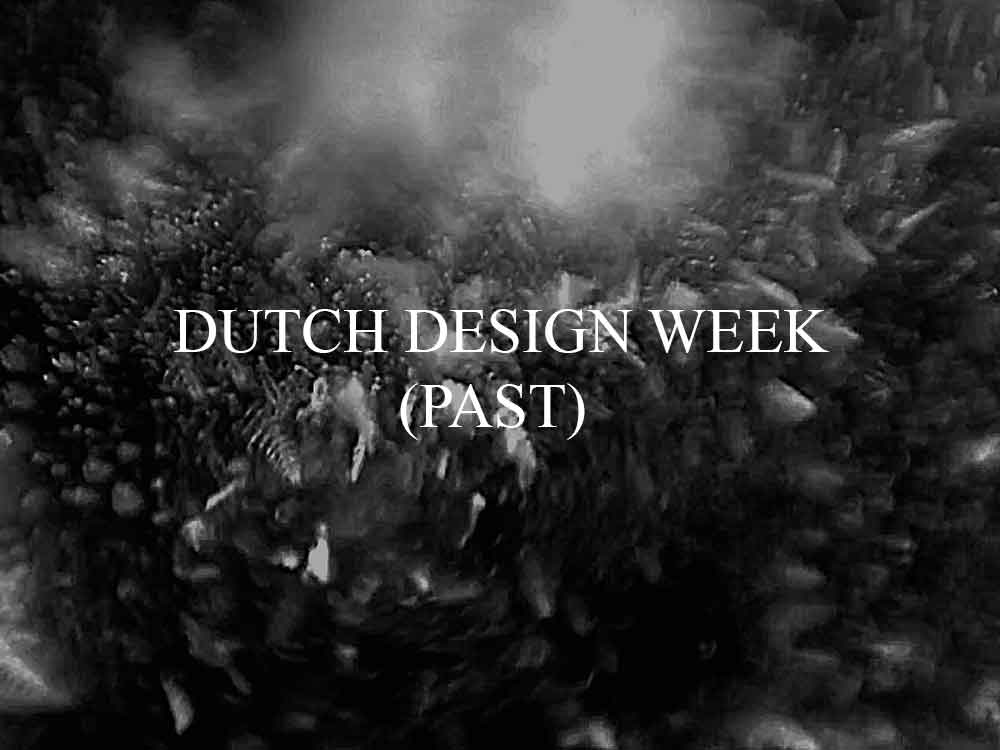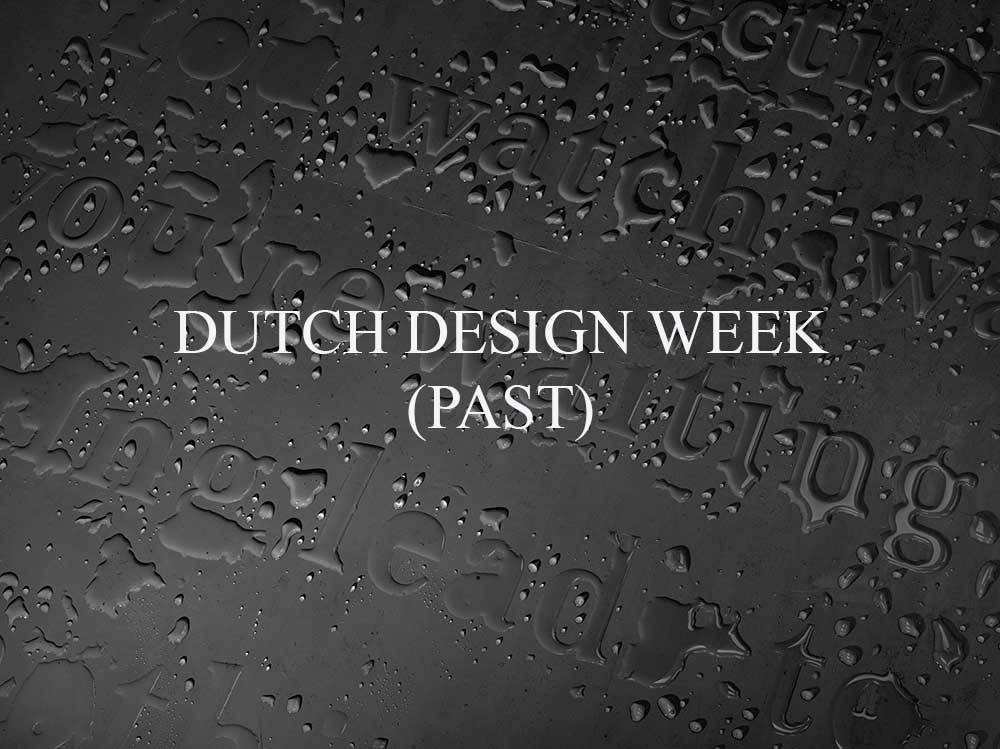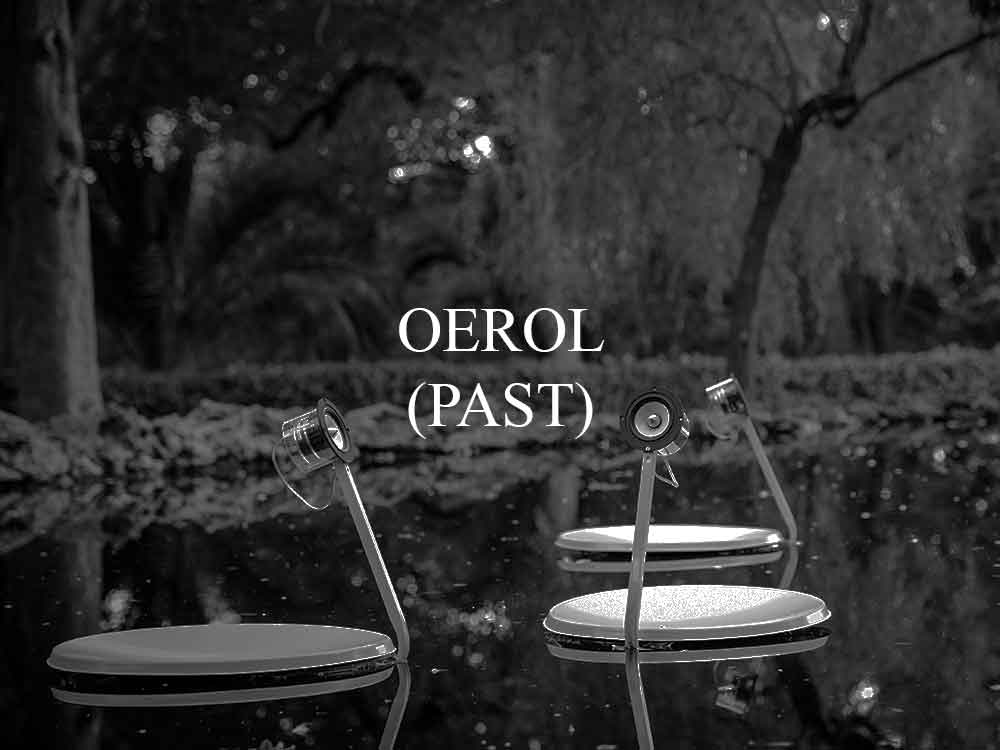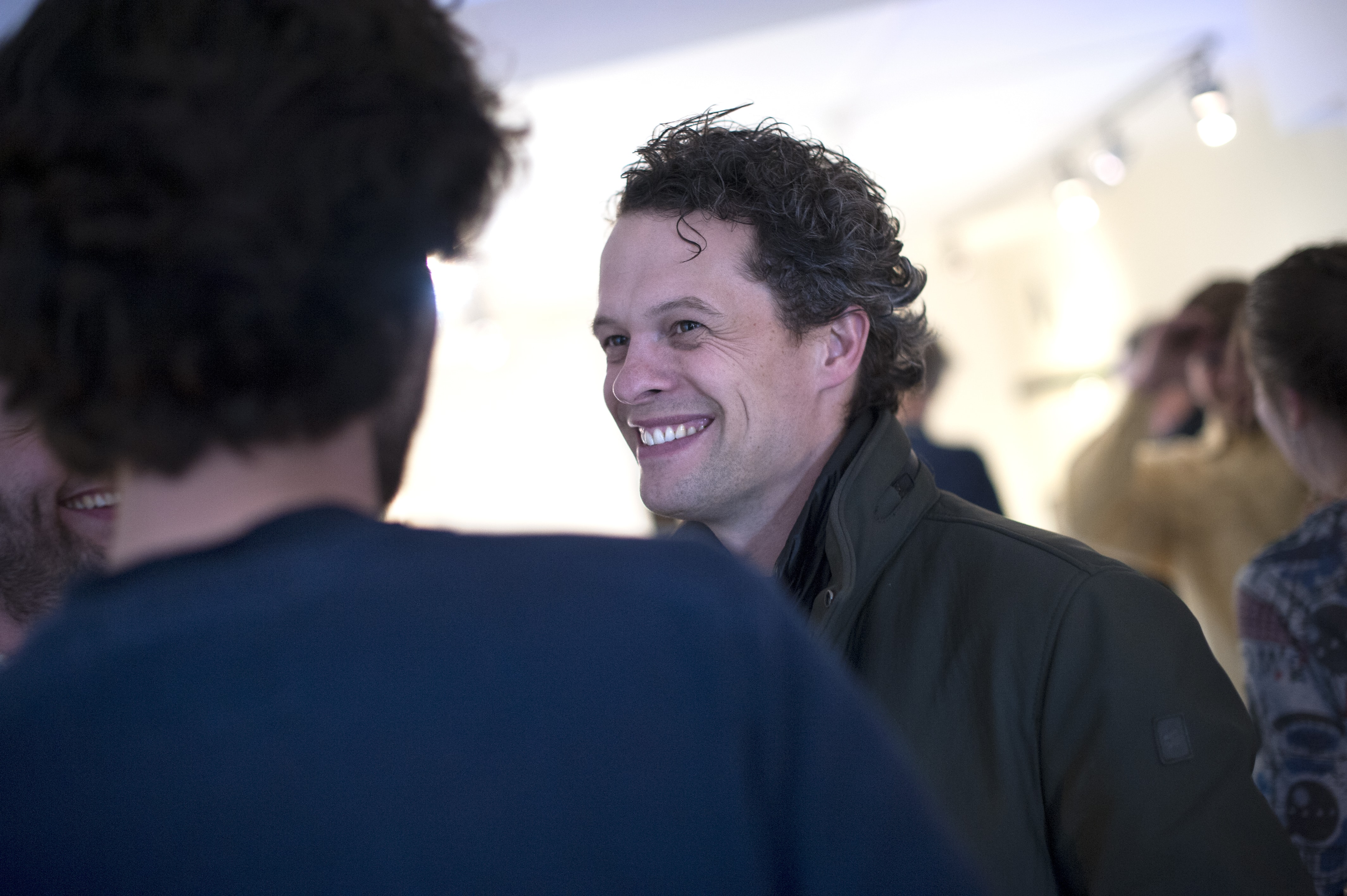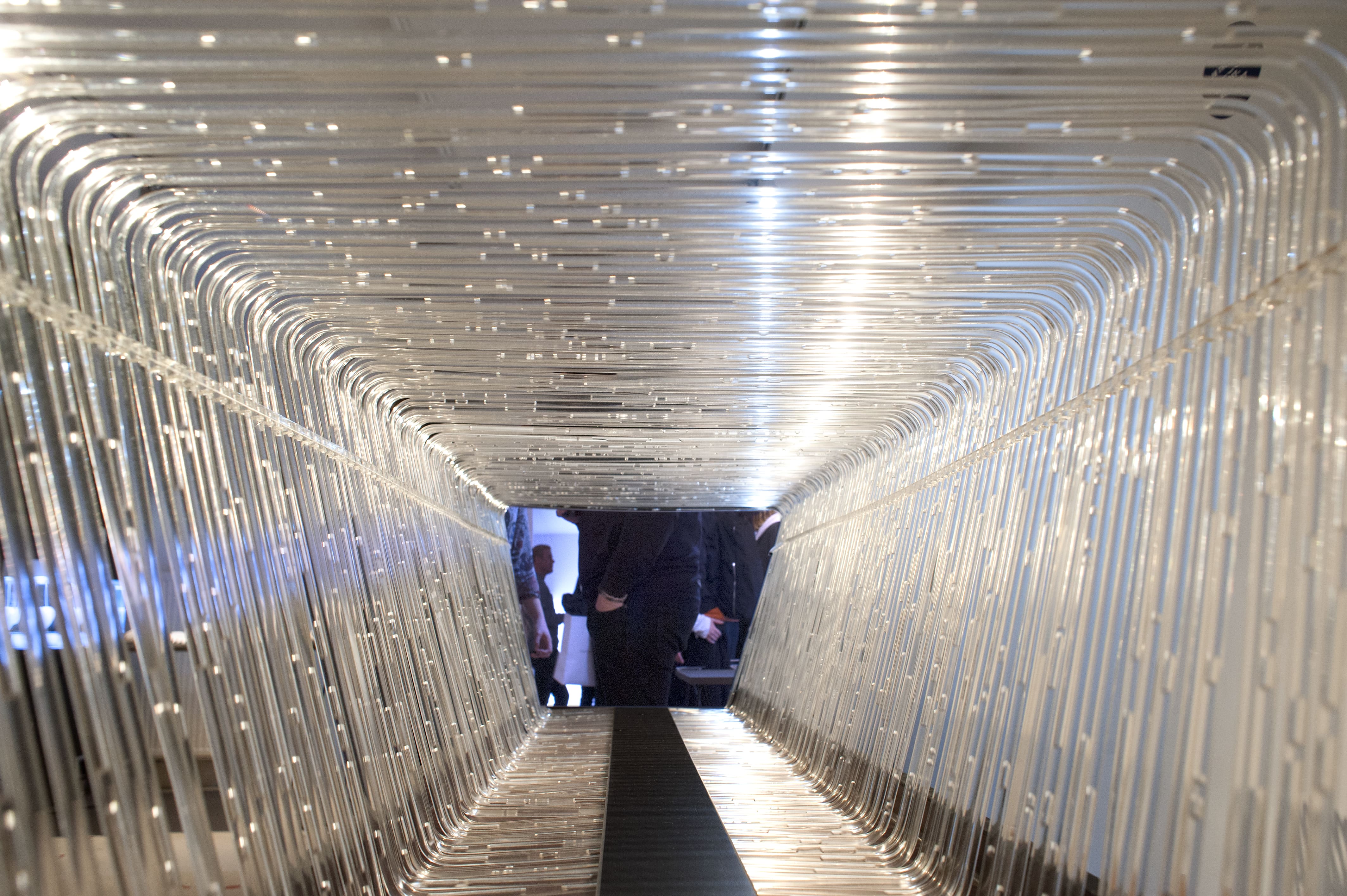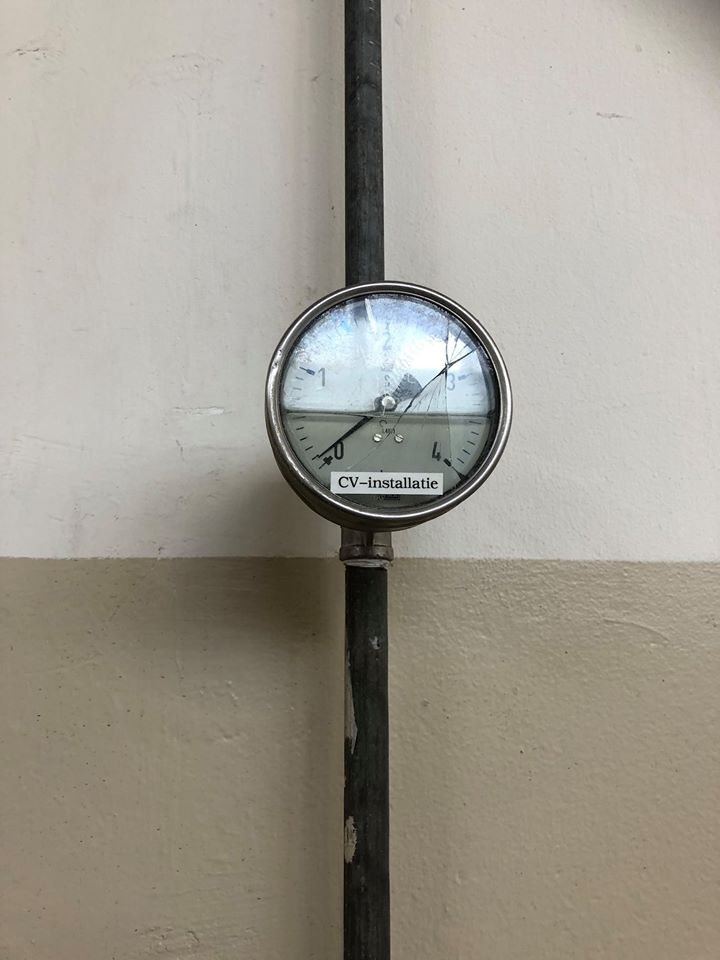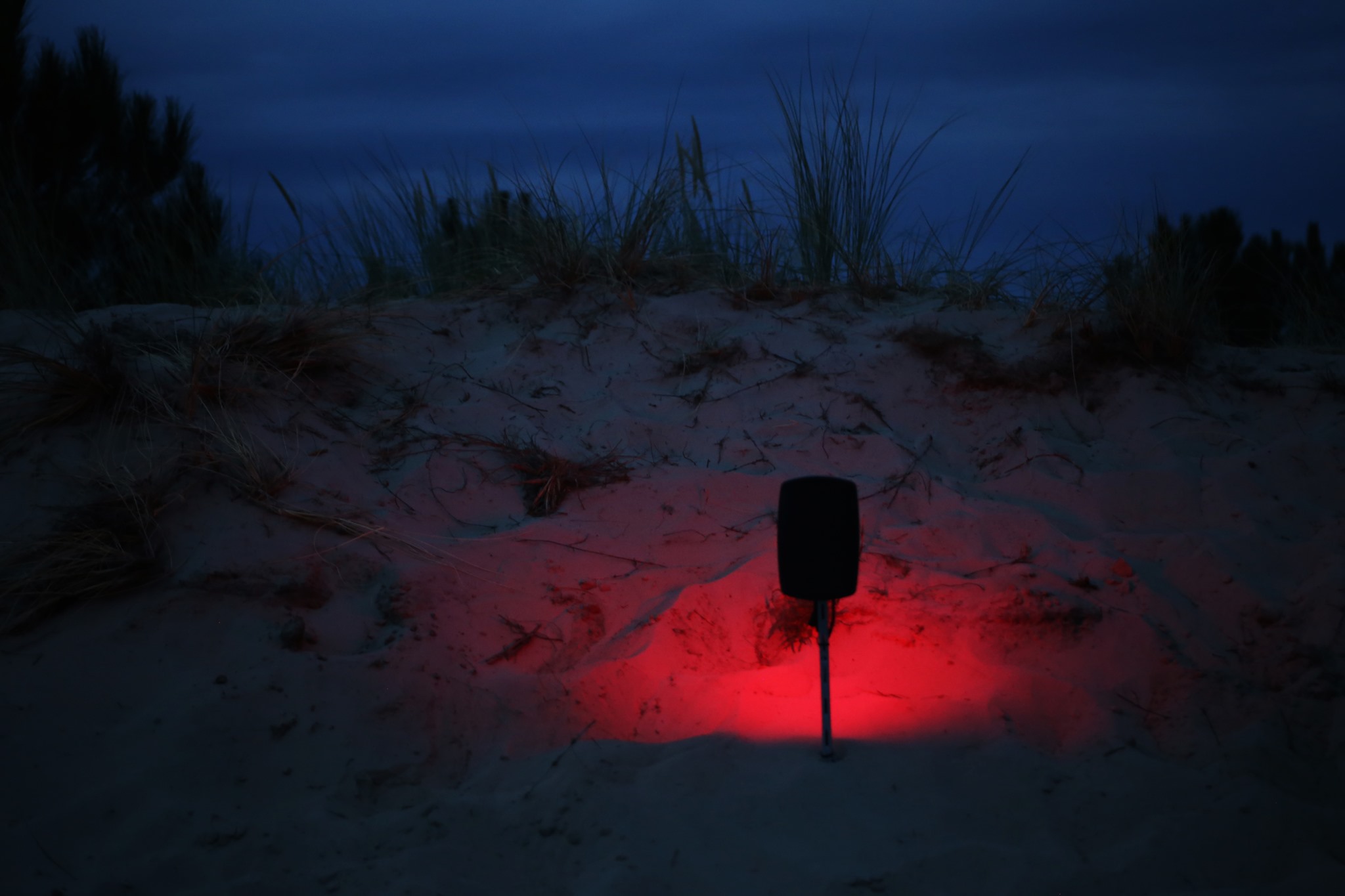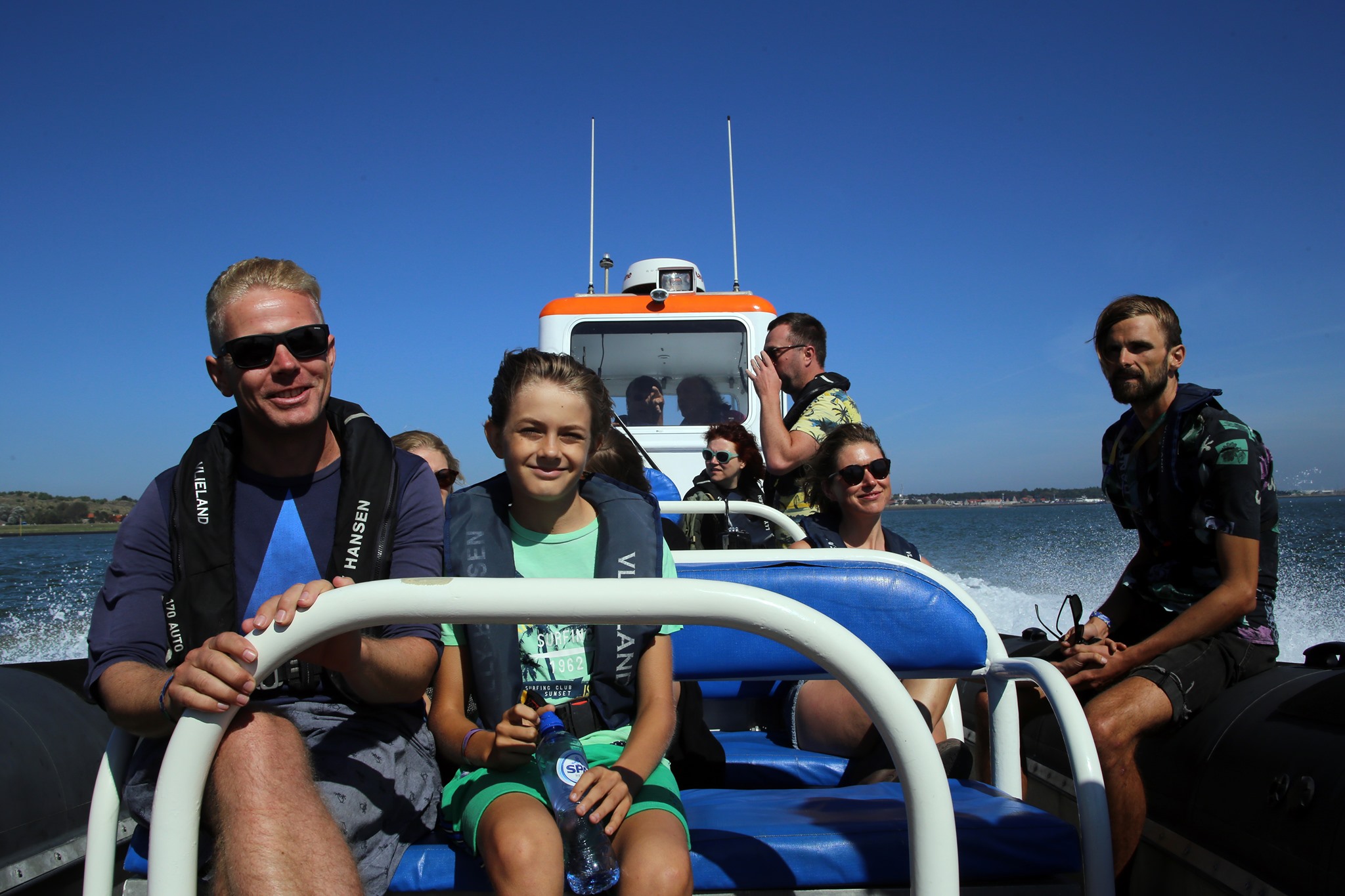IN THE AGE OF POST-DROUGHT
The -In The Age of Post-Drought- exhibition series is dedicated to the global water-related challenges. Transnatural organises a series of exhibitions that aim to address these pressing issues in Amsterdam, at the Dutch Design Week and Grand Hornu (CID) in Belgium. A unique side-program already took place at Oerol, Into the Great Wide Open and in EYE Filmmuseum Amsterdam. On Sunday 21 March 2021 the final exhibition opened at CID au Grand-Hornu in Belgium. It showcases a variety of new works, but also actively incorporates the results gathered from the on-going projects already featured in the previous exhibitions.
The program is an exploration into the various small and large-scale (bio-)technical designs, experiments, solutions and artistic interventions that can contribute to a more ecological friendly future in which water-related issues will be a problem of the past. These problems are looked at from four different angles: water scarcity, water pollution, water nuisance and desertification.
GRAND-HORNU
21 March 2021 (opening)
DUTCH DESIGN WEEK
19 – 27 October 2019
INTO THE GREAT WIDE OPEN
29 August – 1 September 2019
OEROL
14 – 23 June 2019
ABOUT
Due to climate change and the rapid world population growth, water scarcity is grown to be one of the biggest threats facing life on earth in the 21st century. Currently only 3% of the earth’s water supplies consist of freshwater. A multitude of life forms on earth are experiencing the devastating effects of water scarcity; plants-and animal species are threatened with extinction, as their habitat is becoming completely eroded as a result of water issues.
In addition, global warming brings a host of new complex challenges, such as the increasing threat of the rising sea level, which can have devastating effects on lowland plains. Extreme weather conditions will happen more frequently and will cause severe damage to natural habitats.
Apart from scarcity, there is also the increasing issue of water pollution caused by (micro)plastics, chemicals and the noise pollution that is occurring in our rivers and seas. The different types of pollution are penetrating the food-chains and in doing so, effect all organic life on Earth. It is apparent that our water infrastructures are very much distorted, a situation we need to act upon.
EXHIBITION
PROGRAM SCHEDULE
Grand-Hornu
Dates
21 March – 25 July 2021
Opening hours
Tue – Sun from 10.00 – 18.00h
Address
Rue Sainte-Louise 82, Boussu, Belgium
DUTCH DESIGN WEEK
Dates
19 – 27 October 2019
Opening hours
Mon – Sun from 10.00 – 18.00h.
Address
Eindhoven, The Netherlands
INTO THE GREAT WIDE OPEN
Dates
29 August – 1 September 2019
Opening hours
Thu – Sun from 10.00 – 18.00h
Address
Vlieland, The Netherlands
OEROL
Dates
14 – 23 June 2019
Opening hours
Mon -Sun from 10.00 – 18.00h
Address
Terschelling, The Netherlands
OEROL PROGRAM
Transnatural organizes a side program full of immersive performances, workshops and installations in collaboration with Oerol , Into The Great Wide Open and EYE Film Museum. The program explores and stretches the boundaries of technology, nature and society related to the water theme.
More details below.

Swans / Marco Barotti
At Oerol, Marco Barotti will present his installation Swans. These artificial swans are partly constructed by recycled materials (such as satellite dishes) and newly added electronic equipment. In this way the Swans form a ballet of unique creatures swimming in a dunes lake.
Swans represents the power of mainstream TV and mass media. Brought to life by sound, wind and water, these animals float peacefully in a pond merging perfectly with the nature surrounding them. This image provokes both a sense of revulsion and an intimate feeling of familiarity. The Swans are hacking their natural habitat, while challenging the visitor to reflect on the growing tech waste that ends up in our waters.
Clams / Marco Barotti
In nature, clams are detectors of pollutants; they serve as tiny filtration systems. Inspired by this natural phenomenon, Marco Barotti is now presenting his new work Clams; a kinetic sound installation triggered by water quality. Real-time data is streamed by a sensor and converted into an audio signal.
The audio signal generates a live evolving soundscape, which initiates the opening and closing movements of the clam sculptures. Sound and motion unite to create an experience that allows the audience to see and hear the water quality in real-time. The Clams sculptures are made from recycled industrial plastic waste. The artwork intends to raise awareness about water issues and plastic pollution.

Under The Surface / Maze de Boer
Under The Surface is a première work and part of the residency program in which Maze de Boer develops a unique work at a location in the dunes on Oerol. The new work exists at the area of tension between visual art and theatre. Maze de Boer reflects on this theme of water (and its dilemmas) by making it palpable on site.
De Boer created new work with fishing nets . The installation responded to the global sea level rise. From the highest dune, visitors had a view on boats lying in dry on the dunes. These drawings were made from the fishing nets spread in parts over the dunes.
ITGWO PROGRAM

Vestibular S. Observatory / Robertina Šebjanič & Arnout Meijer
In this site-specific audiovisual observatory the sound and light of the Vlieland island and the Wadden Sea are aligned. Underwater and above surface, audible and inaudible, day and night. The inverted dome positioned in the old inland dune is the sun(d)idial of the Vestibular S. Observatory. It corresponds with the path of the sun, that is followed by the subaquatic sounds Into the Great Wide Open.
Robertina Šebjanič (1975) based in Ljubljana (SI), is an internationally exhibited and awarded artist. Her work is since several years focused into cultural, (bio)political and biological realities of aquatic environments, which serves as a starting point to investigate and tackle the philosophical questions on the intersection of art, technology and science.
Arnout Meijer’s commissioned and self-initiated projects range from public sculpture, architectural interventions, and interiors to video and product design. His work is characterized by ongoing explorations of perception and light. As the designer tells us, “The way we perceive the world around us defines the reality we live in. Undeniably our most dominant perceptive sense is our vision, which depends entirely on the presence of light.”

Aquatocene workshop / Robertina Šebjanič
Two third of all fish species living in the Dutch freshwater belongs to a group of ‘hearing specialists’ and are highly sensitive for sound. This group, among many others, will experience the negative effects of the increasing underwater noise nuisance. In general, the effects of noise pollution on aquatic ecology are still obscure. Noise pollution is, among others, caused by the off-shore industry, construction activity, fishery, and water sports.
In the artistic project Aquatocene, Robertina Šebjanič investigates the impact of noise pollution on the aquatic ecosystem in lakes, rivers, and seas. Since 2016 Šebjanič travels all around the world to record the noise nuisances that are found in our waters. Her large database of sound, that is still growing, have set the starting point for her audiovisual performances and installations. With her project, Šebjanič aims to open up a discussion about the aquatic ecology and the noise pollution that is occurring. She will present different performances and installations and will give a workshop in which she will take her participants on an expedition to the underwater soundscapes.

Excrementus Megalomanus / Atelier Van Lieshout
“Throne, watchtower, pulpit, pot, cocoon, module, spaceship, mutating virus, living organism, arthropod, liberté, égalité, fraternité, peace, pis, everything your heart desires, urinal, vomatorium, ejaculatorium, excrementorium, toilet of toilets, compost to the people.”
When one visits AVL’s Excrementus Megalomanus, one leaves behind the turbulence of the festival by towering above it. Becoming part of the recycling process, while exhibiting yourself.
Human waste systems and toilets have always been part of Atelier Van Lieshout’s work. They are functional sculptures on the border between art, design and architecture, one of the boundaries that AVL often plays with and rebels against. A compost toilet is a very simple way to efficiently recycle every human excretion imaginable and it made its first appearance in the oeuvre of AVL in 2001 during AVL-Ville, the anarchist and self-sufficient free state in the port of Rotterdam.
EYE FILM MUSEUM PROGRAM

TeZ and Federico Murgia - Aquatic State
It’s a great pleasure to announce the premiere of the new project by Optofonica Lab. ‘Aquatic State’ is an experiential display of the marvelous and often mysterious transitions of the most common and important element of planet Earth – water – through its three different states, liquid, solid and gaseous. Artists TeZ and Federico Murgia from Optofonica Lab will present an audiovisual creation that, through microscope magnification and custom thermal apparatus poetically exposes such invisible structures morphing in real time from fluid to ice crystals and gaseous bubbles formation.
The abstract and geometrical patterns, morphing from almost artificial and synthetic structures to an organic and seemingly living appearance, make the incredible metamorphosis of water appreciable to the human senses.

Nicky Assmann and Joris Strijbos - Liquid Solid
Liquid Solid is a collaborative project between Nicky Assmann and Joris Strijbos. The two artists investigate what happens if one allows thin layers of liquid soap to freeze in the subarctic zone of Finland. Soap only freezes at very low temperatures, because the water remains protected by the soap acids for a very long time. The movie shows the reaction and change of the soap film at minus twenty, the temperature at which an accelerated freezing process occurs. In these extreme conditions, the iridescent quality of the soap membrane disappears as it freezes and it gradually forms ice crystals that grow into geometric figures and patterns.

Robertina Šebjanič - Aquatocene Performance & Workshop
In the long-range project Aquatocene, Robertina Šebjanič investigates the impact of noise pollution on the aquatic ecosystem in lakes, rivers, and seas. Two-thirds of all fish species living in the Dutch freshwater belong to a group of “hearing specialists” and are highly sensitive for sound. This group, among many others, will experience the negative effects of the increasing underwater noise nuisances that are found in our water.
In 2019 she has been invited to record the sea around Vlieland (during Into The Great Wide Open) and in Amsterdam’s IJ water, which results in this performance at Eye Filmmuseum. Her large database of sounds, from different seas and oceans around the globe, that is still growing, have set the starting point for her audiovisual performances and installations. With the project, Šebjanič aims to open up a discussion about the aquatic ecology and the noise pollution that is occurring.
On Monday September 30, the audience is welcome to take part in her workshop recording underwater pollution at the IJ- lake.
Time: 13.00 – 16.00h. Address: EYE, IJ promenade 1, Amsterdam
Max. amount of 10 persons. Participation fee: 25 Euro p.p., excluding service costs. Buy your ticket here.
Participation via registration only. Please register by sending an email to info@transnatural.org

Joris Ivens - Regen
Regen (Rain) is a short documentary by Joris Ivens (1898-1989) from 1929. It is regarded as an avant-garde classic and is included in the EYE collection. Regen consists of a silent series of black-and-white images. It depicts, from an ever-changing perspective, a rain shower in Amsterdam: from the first drops in the canals to a curtain of clattering water, to the view of passers-by trying to anchor themselves with an umbrella.
It took Ivens almost two years to shoot enough rain shower material to edit the movie. For the director, the poetry of the images and the visual composition was more important than the linear developing of a storyline. Originally Regen was a silent movie, its soundtrack was created only later; during this special evening, the movie score will be performed live. The film, which Ivens made with Mannus Franken, is a typical example of a urban symphony, such as those made in the 1920s by, among others, Walter Ruttmann (Berlin – Die Sinfonie der Großstadt, 1927) and Dziga Vertov (The man with the camera, 1929).
LOCATION & DATES

Grand-Hornu
Boussu, BE
Dates
21 March – 25 July 2021
Opening hours
Tue – Sun from 10.00 – 18.00h
Address
Rue Sainte-Louise 82, Boussu, Belgium
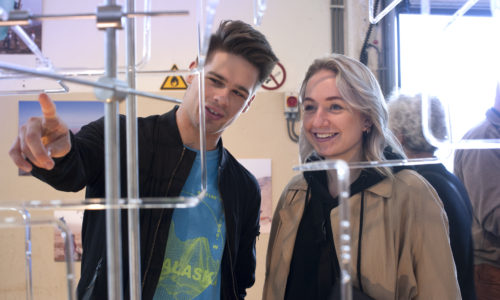
Dutch Design Week
Eindhoven, NL
Dates
19 – 27 October 2019
Opening hours
Mon – Sun from 10.00 – 18.00h.
Address
Eindhoven, The Netherlands

ITGWO
Vlieland, NL
Dates
29 August – 1 September 2019
Opening hours
Thu – Sun from 10.00 – 18.00h
Address
Vlieland, The Netherlands

Oerol
Terschelling, NL
Dates
14 – 23 June 2019
Opening hours
Mon -Sun from 10.00 – 18.00h
Address
Terschelling
ORGANISATION
In the Age of Post – Drought is an event organized by Transnatural institute that offers an ongoing cultural program and that represents an Art & Design Label.
Transnatural explores how technology can support the natural world and ecological wealth. All cultural activities and the label collection are related to an envisioned world where man, nature and technology merge. Transnatural works with a multi-faceted mixture of national and international creators, thinkers, businesses, R&D labs, studios and research institutes.
In the Age of Post – Drought is organized in close collaboration with the partners Oerol, Into the great wide open and the Dutch Design Week. The project is generously supported by the sponsors mentioned below. The program is curated by Arjen Bangma with assistance of Imke Ruigrok.
More information at www.transnatural.org / www.transnaturallabel.com
FOLLOW EVENTS
SPONSORS










